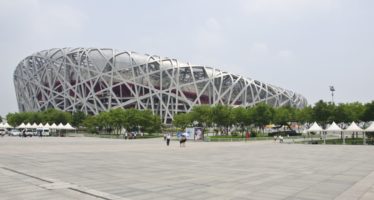Emerging Markets: A positive outlook amid choppy waters

Emerging markets will continue to grow faster than their developed counterparts
Emerging markets equities faced choppy waters for the first three quarters of 2019. This asset class began the year on a strong note, rallying through the first quarter, then experienced sharp sell-offs in spring and summer.
The asset class recovered modestly in September once U.S./China trade negotiations assumed a more conciliatory tone, but did not recover to the level attained in early April. Still, the asset class was back in positive territory at the end of the third quarter, with the MSCI emerging markets index registering a small year-to-date gain of 3.65% (in U.S. dollar terms) as of Sept. 30.
The prospect of slowing global economic growth deepened the woes of emerging markets equities, which typically do not perform well in a slow-growth environment because a decline in global growth negatively impacts emerging markets’ exports to the developed world.
A stubbornly strong US$ also negatively impacted capital flows to emerging markets, contributing to their pull-back.
However, accommodating monetary policies, manifested in lower interest rates across a wide cross-section of emerging markets, as well as rate cuts by the U.S. Federal Reserve Board and the European Central Bank, tempered the impact of slower growth.
Yet, despite slower global economic growth, emerging markets will continue to grow faster on average than their developed counterparts. According to the International Monetary Fund’s (IMF) October 2019 World Economic Outlook, global economic growth will be 3.4% in 2020, up from 3.0% in 2019, while developing economies will grow by 4.6% in 2020, up from 3.9% in 2019.
“Emerging markets are a cyclical asset class that can provide superior returns to the MSCI emerging markets index over a full cycle, but with volatility,” says Matthew Strauss, vice president with Signature Global Asset Management in Toronto, and portfolio manager of the $130.1-million Signature Emerging Markets Fund.
“Emerging markets generally offer investors access to faster-growing economies than in the developed world,” Strauss adds. “These countries are increasingly adopting orthodox structural reforms and central bank policies, much to their benefit.”
While global trade growth during the first half the year was at the weakest level since 2012, according to the IMF, emerging markets have been largely resilient to U.S./China trade tensions, facilitated by increasing intra-emerging markets trade, particularly with China, which has replaced the U.S. as their favoured export destination.
Emerging markets are not as reliant on commodity exports as they were previously, largely due to strong domestic demand that allows these economies to grow regardless of external forces.
“Emerging markets will continue to do well if we are headed for a mild slowdown,” Strauss says. But, he adds, a global recession would create a “difficult environment.”
Strauss uses an integrated, top-down/bottom-up approach combined with fundamental research to make active decisions on all aspects of the Signature fund’s portfolio, including country and stock selection as well as asset allocation.
When investing at a country level, Strauss looks at “the country of risk, instead of the country of domicile: where is the revenue coming from?”
For example, he may invest in Barrick Gold Corp., a company listed on the Toronto Stock Exchange with exploration activities that are largely concentrated in South America.
At a company level, Strauss looks at factors such as the strength of management, growth potential of the business and the health of the balance sheet. In some cases, he says, investing in companies that have leveraged balance sheets makes sense.
Given the uncertain market conditions, the Signature fund’s portfolio is positioned defensively and is selectively over-, under- or zero-weighted in specific regions and countries.
At a regional level, the portfolio has 60.5% exposure to Asia, 15.1% to Latin America, 10.9% to Europe, 10.3% to North America, and 1.8% to Africa and the Middle East.
The Signature fund has an overweighted 36% exposure to China, Hong Kong and Macau (which Strauss views collectively as “China”); a slightly overweighted 9.9% in India; and an equal 8% weighting in Brazil. The fund is underweighted in South Korea (5.9%), Taiwan (4%) and in “problematic countries” in the Europe, Middle East and Africa region. The fund has zero exposure to Turkey.
Strauss says China has “a lot of idiosyncratic investment opportunities that will provide good returns in spite of its slowdown in growth.” He expects many industries, especially sportswear and other consumer industries, to do well. Although China’s slowdown has riled the markets, the country’s economy still is growing in the 5%-6% range, which is much faster than developed markets, although he expects China’s growth to slow further.
“China’s slowdown is well-known and is already priced into the market,” Strauss says.
The Signature fund’s underweighted positions in South Korea and Taiwan are due to the portfolio’s underweighted positions in the auto and technology sectors, which are dominant in these countries. Strauss says he is not interested in investing in stocks that are tied to the domestic market in these countries.
From a sector-allocation perspective, the Signature fund’s largest exposures are to financial services (27.3%), consumer goods (16.2%) and technology (15.2%).
One of the portfolio’s largest holdings is Guangdong Investment Ltd., a company incorporated in Hong Kong that has a 30-year, exclusive concession to provide raw water to Hong Kong. The company has a stable revenue base and increased its dividend by 20% over the past five years.
Another of the Signature fund’s top holdings is Sperbank Rossii OAO GDR, one of the largest Russian state-owned banks, with a 30% market share.
Industries that may be established in developed economies, such as drugstore chains and e-payment firms, are growth companies in emerging markets, says John Mensack, senior investment director, emerging markets, with Schroder Investment Management North America Inc., in London, U.K. Schroder subadvises the $513-million Sun Life Excel Emerging Markets Fund.
“Emerging markets at one time had offered a higher beta play on global trade,” Mensack says. “But that sensitivity is not nearly as high today. We feel this is evidence of the growing importance of domestic markets within these countries, [and] an important sign of growing maturation.”
Mensack says that from a valuation perspective – specifically, price-to-book – emerging market equities provide some value relative to their own history.
“When compared with their developed-market counterparts, however,” Mensack says, “[emerging market equities] offer a significant valuation advantage – a fact that should not be lost on asset allocators.”
Mensack says he does not actively allocate to sectors, nor does he have an intended style bias: “We employ a proprietary, quantitative country model to guide us on country allocation – typically the major determinant of return in emerging markets.”
Once a country allocation is determined, Schroder’s proprietary ranking model is used “to populate the country ‘sleeves’ with the stocks that are highly rated in our ranking methodology,” Mensack says.
At a regional level, the Sun Life fund’s portfolio has a 64% weighting in Asia, 15.5% in Latin America, 14.1% in Europe and 5.9% in Africa and the Middle East.
Among the Sun Life fund’s largest country exposures are China (30.6%); South Korea (13.6%); Brazil (11.3%); Taiwan (9.9%); Russia (7.9%) and India (4.7%).
Mensack says the portfolio is overweighted in Brazil, which is tackling its structural fiscal challenges through pension reform. “Should this effort be signed into law,” he says, “privatization of government-held land and corporate interests, along with tax reform, are the administration’s next desired moves. Even modest success in these efforts is helping to fundamentally re-rate this country in the eyes of the markets.”
The Sun Life fund’s portfolio is also overweighted in Russia, the “fiscal position [of which] is the envy of most emerging – and many developed – economies,” Mensack says. The country is operating with twin surpluses: trade and fiscal. In addition, he says, the national budget is based upon an oil price in the US$40-US$50 range, which aids the country’s fiscal position.
While Mensack likes India over the longer term, the Sun Life fund holds an underweighted position in that country based on his belief that India still has many structural challenges. “India still trades at a significant premium to the rest of emerging markets,” he says, “which we feel is unjustified.”
One of the Sun Life fund’s overweighted positions is Samsung Electronics Co. Ltd. Although Samsung is based in Korea, where the impact of less trade can be more acute, Mensack says, the company is world-class with competitive advantages in components, an industry for which he forecasts a recovery in prices. Samsung also boasts a strong balance sheet, has shown strong supply discipline and trades at a compelling valuation that, Mensack says, “discounts much, if not all of the impact of a worsening trade situation.”
While the Sun Life fund’s portfolio is underweighted in India, HDFC Bank is currently a core, overweighted holding. It is the leading bank in India that is not a state-owned enterprise (SOE). HDFC Bank has made impressive market share gains, largely due to its low-cost structure and strong deposit franchise. “In a country where we feel the non-performing loans of SOE banks are understated,” Mensack says, “we believe HDFC Bank stands to make further gains as this situation eventually comes to the surface.”
The themes affecting emerging markets have been fairly steady this past year, Mensack says, and as a result, the portfolio management team has not made significant changes to the Sun Life fund’s portfolio. “We have waded back into some markets that had been recently stressed – Greece and Turkey – although with very modest overweighted positions,” he says.
Dwarka Lakhan
Dwarka Lakhan is a pioneer in emerging markets journalism in Canada. His first emerging markets article, “Africa Joins Ranks of the Emerging,” appeared in Investment Executive, Canada’s leading newspaper for financial advisors, in September 1994. Since then he has written hundreds of articles on the full spectrum of emerging markets and has conducted more than two thousand interviews with emerging and frontier markets investment professionals.
Related Articles
Three Reasons We Remain Bullish on Emerging Markets Long Term
Emerging markets have seen progress on back of an uptick in vaccination rollouts, but the recent Chinese regulatory crackdown and
Progress and Improving Sentiment in China
At the start of the year, sentiment in China’s equity market was poor at best, but the worst fears of
Emerging market recovery – Silver lining slides into sight
The jury is still out on the strength and timing of the emerging market recovery. Despite the fallout from the Argentine



